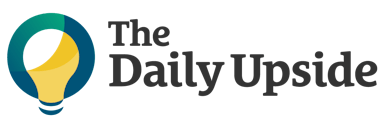Product Designer
About us
At Pareto.AI, we’re on a mission to enable top talent around the world to participate in the development of cutting-edge AI models.
In coming years, AI models will transform how we work and create thousands of new AI training jobs for skilled talent around the world. We’ve joined forces with top AI and crowd researchers at Anthropic, Character.AI, Imbue, Stanford, and UPenn to build a fair and ethical platform for AI developers to collaborate with domain experts to train bespoke AI models.
As a fully remote and global venture-backed startup headquartered in San Francisco, we have a 20-member core team and a 150-member operations team.
About this role:
We seek a Product Designer to develop user-centered interfaces that enable researchers and expert annotators to collaborate to collectively capture ground truth knowledge.
In this role, you will work closely with cross-functional teams to ensure that every design contributes to building the best workflow orchestration platform. You will conceptualize, design, and refine products, ensuring they are functional, intuitive, and scalable.
You’d be a great fit at Pareto if you:
Have strong communication and collaboration skills to articulate design concepts and rationale to stakeholders.
Enjoy working in high-growth startups and building minimum viable products.
Can juggle multiple projects and priorities while delivering effectively in a fast-paced, dynamic environment.
Work flexibly to iterate and refine ideas based on feedback and changing project requirements.
Understand business metrics and can translate company goals into digital experiences.
Are motivated by challenges and driven to achieve excellence.
Have strong design thinking and problem-solving skills.
What you’ll do:
Craft intuitive products that delight users while driving business goals
Partner with cross-functional teams to define requirements and develop solutions
Create user flows, wireframes, and high-fidelity designs
Conduct user research and usability testing to inform decisions
Develop and maintain design systems
Collaborate with developers on the implementation
Stay current with industry trends
What you’ll need :
3+ years of B2B SaaS product design experience
Strong portfolio showcasing interface design expertise
Experience with end-to-end product design, user research, and design systems
Proficiency in Figma and prototyping tools
Understanding of HCI, design principles, and technical foundations
Knowledge of AI/ML, design tokens, and basic coding is a plus
San Francisco-based preferred
Perks:
Venture-backed early-stage startup with competitive salary, equity, and benefits
International team with a flat structure and high ownership
A growth-focused environment with challenging projects
Home office stipend and medical insurance included
Average salary estimate
If an employer mentions a salary or salary range on their job, we display it as an "Employer Estimate". If a job has no salary data, Rise displays an estimate if available.
Are you a talented Product Designer looking to make a real impact in the world of AI? Look no further than Pareto.AI, a cutting-edge startup based in San Francisco, where we’re on a mission to harness top talent to develop groundbreaking AI models. As a Product Designer here, your role will be essential in creating user-centered interfaces that facilitate collaboration among researchers and expert annotators. You'll join a passionate, remote team dedicated to building a fair and ethical platform in the AI space. Your strong communication skills and flair for creativity will shine as you work closely with various cross-functional teams, ensuring all designs enhance our workflow orchestration platform. Each day will be filled with excitement as you conceptualize, design, and refine products that are not only functional but also intuitive and scalable. Imagine crafting delightful digital experiences that drive business goals forward, while continuously iterating based on feedback. If you thrive in a dynamic environment, have a robust portfolio showcasing your expertise in B2B SaaS product design, and have a knack for understanding design principles and human-computer interaction, we want to hear from you! With a minimum of 3 years of relevant experience, familiarity with Figma, and a passion for tackling challenges, you'll fit right in at Pareto. Plus, enjoy the perks of a venture-backed startup, competitive salary, equity, and the chance to be a crucial part of an international team that values high ownership and growth. Ready to join us on this exciting journey?
pareto.ai is a talent-first human data collection platform for ai research, empowering the top 0.01% of expert labelers to deliver the highest-quality training data.
5 jobsSubscribe to Rise newsletter
Career Copilot
you, just ask me below!



